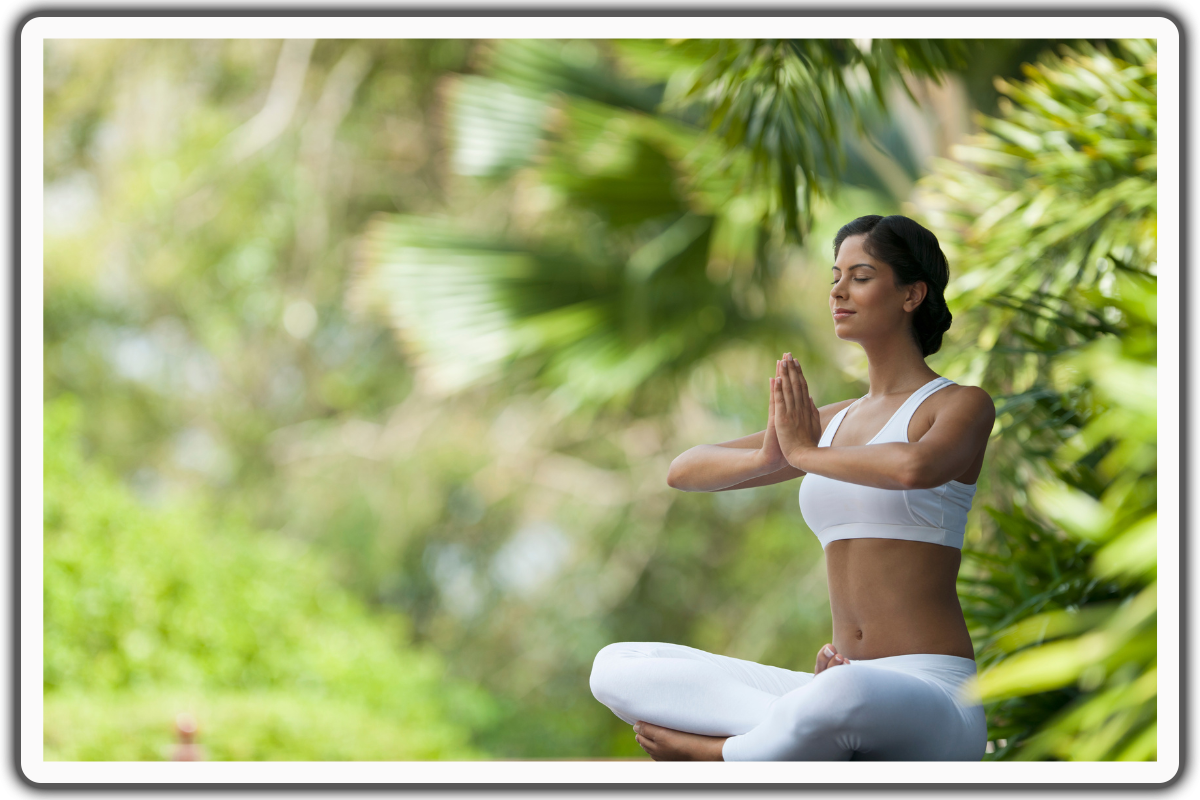
Yoga For Tension Headaches: Relieve Pain and Restore Peace
Tension-type headaches are one of the most common headaches experienced by individuals. When you experience a tension headache, it can feel like a tight band squeezing your head. the pain may radiate from the back of your neck to the front of your head, causing discomfort and impacting your daily life. While offering temporary relief, over-the-counter pain medications frequently have unwanted side effects and are not a long-term solution that is why it is vital to know the yoga pose for migraine.
Yoga offers a natural and holistic approach to managing tension headaches. By gaining insight into the origins of these headaches and how yoga can help, you can take proactive steps towards finding lasting relief.
Understanding Tension Headaches

Tension headaches are one of the most common headaches experienced by individuals. They exhibit a persistent, throbbing pain that may wrap around the head, typically caused by muscle tension in the neck and scalp. These headaches can be triggered by various factors, such as stress, anxiety, poor posture, or even eye strain from excessive screen time.
Causes of Tension Headaches
Tension headaches can have various causes, and pinpointing the underlying source of your headaches is crucial for discovering the most effective relief. Stress and anxiety are common triggers for tension headaches since they can induce muscle tension and constriction in the neck, leading to the scalp. Inadequate body alignment, exemplified by a slouched or hunched position over a desk, can also contribute to tension headaches.
Another factor to consider is eye strain. In today's digital age, many spend countless hours starring at screens, whether for work or leisure. This prolonged screen time can strain the eyes and lead to tension headaches. Also, dehydration, lack of sleep, and certain foods or beverages can trigger tension headaches.
You can proactively avoid future occurrences by identifying and addressing the underlying causes of your tension headaches. Incorporating yoga can help reduce stress, improve posture, promote relaxation, and manage these contributing factors, providing natural relief for headaches and preventing chronic tension-type headache.
Does Yoga Help with Tension Headaches?
Yoga offers many benefits for individuals suffering from headaches or chronic tension headaches. Incorporating yoga into your daily regimen, you can experience both physical and mental relief from your headaches. Let's explore some of the key benefits that yoga can provide.
Stress Reduction
Stress frequently catalyzes tension headaches. Yoga alleviates stress by soothing the nervous system and promoting relaxation. Through deep breathing and mindful movement, yoga offers a pathway to discover serenity within the tumult of daily existence, reducing the frequency and intensity of tension headaches.
Muscle Relaxation
Tension headaches often result from muscle tension and tightness in the neck and scalp. Yoga poses, such as gentle neck stretches, child's pose, bridge pose, and shoulder releases, can help release tension in these areas, relieving headache pain. By incorporating regular yoga practice, you can improve your body's ability to relax and release muscle tension, preventing the onset of headaches.
Improved Posture
Poor posture, including issues like forward head posture or forward head position, may result in neck and shoulder muscle tension and strain, ultimately leading to tension headaches. Yoga plays a pivotal role in addressing this concern with its myriad benefits. It helps improve posture by strengthening the core muscles and increasing body awareness. As you become more mindful of your alignment during yoga practice, including addressing forward head posture, you can carry these principles into your daily life, maintaining proper posture and reducing the risk of tension headaches.
Mental Clarity
Tension headaches can leave you feeling mentally foggy and unable to focus. Yoga, such as Hatha Yoga, incorporates meditation and breathing exercises to help clear the mind, improve concentration, and enhance mental clarity. By practicing yoga regularly, you can cultivate a sense of calm and mental balance, reducing the impact of tension headaches on your cognitive function.
By harnessing the power of yoga pose for migraine, you can experience these benefits and find relief from the pain and discomfort of tension headaches. Let's explore specific yoga poses and techniques to help alleviate tension headaches.
Yoga for Tension Headaches Relief
When it comes to relieving tension headaches through yoga pose for migraine, specific poses and techniques can be particularly effective. These poses target the neck, shoulder blades, and upper back muscles, where tension accumulates. It can also release muscle tension, improve blood circulation, and relieve headache, neck, and even migraine pain.
Warm-Up
Beast Breaths
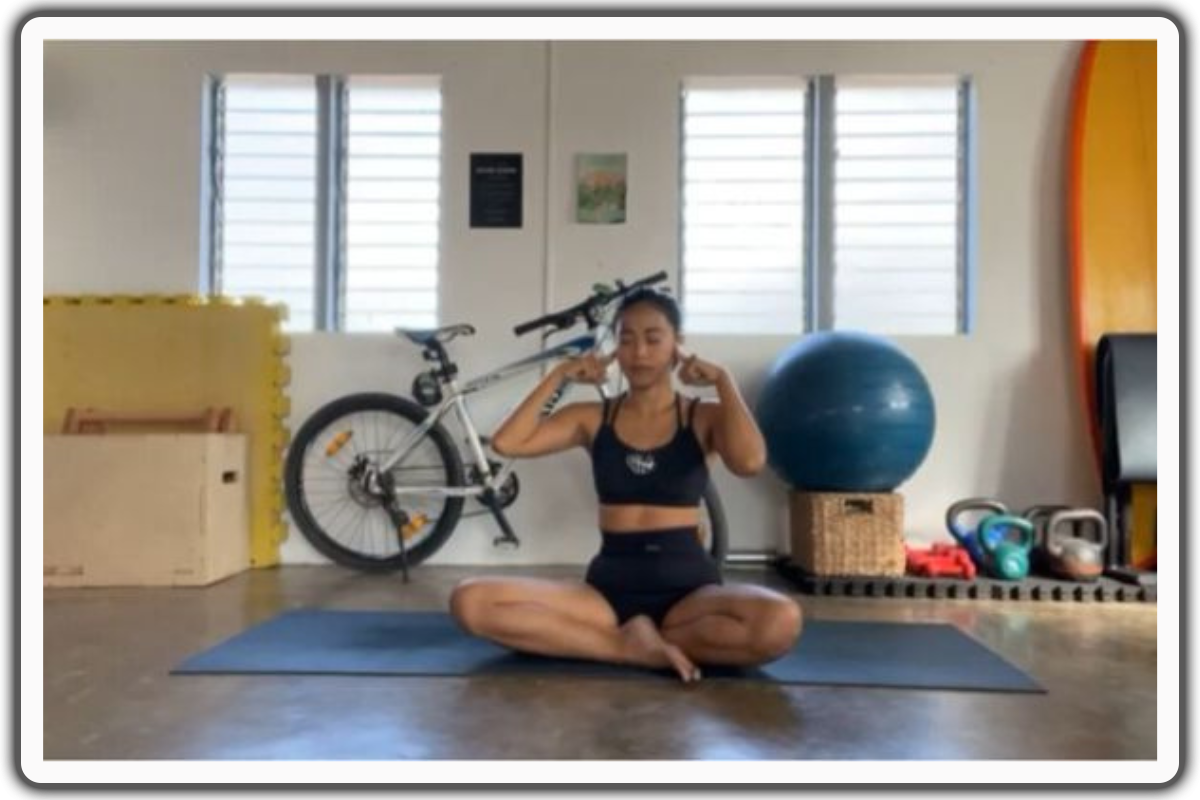
Begin in an upright sitting position on the floor with your legs crossed in front of you while maintaining good alignment with your head, shoulders, and hips. Place a finger between each side of your cheeks and ears. Inhale through the nose, then press the cartilage between your cheeks and ears. While exhaling produce a resonant humming noise until all the air has been expelled. Repeat the movement and start with 1 set of 8 repetitions.
Note: You can use support such as a yoga block, book, pillow , or custom for this exercise.
Routine
1. Cat-Cow
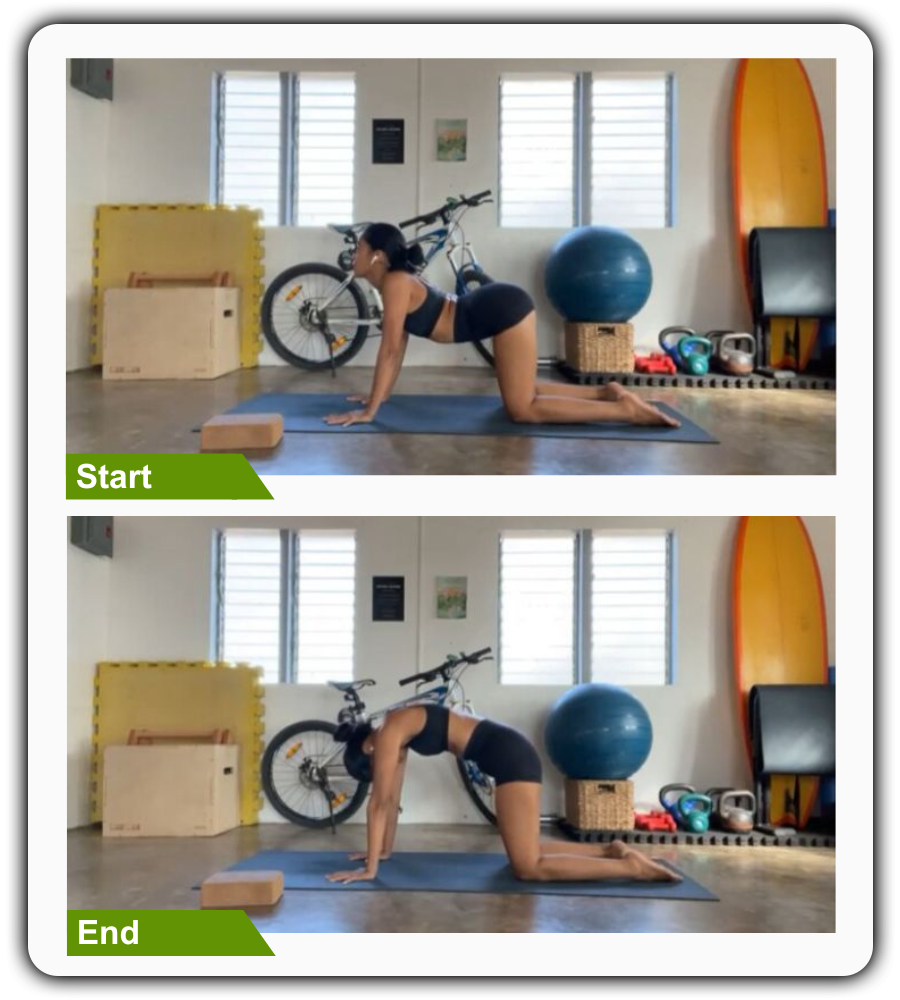
Begin in a 4-point with you hands beneath your shoulders and your knees under your hips. Engage your core. slowly, lift your head, and arch your mid-back. Then, alternate by rounding out your mid back as you drop your head downward. Repeat the movement, alternating directions.
2. Eagle Arms
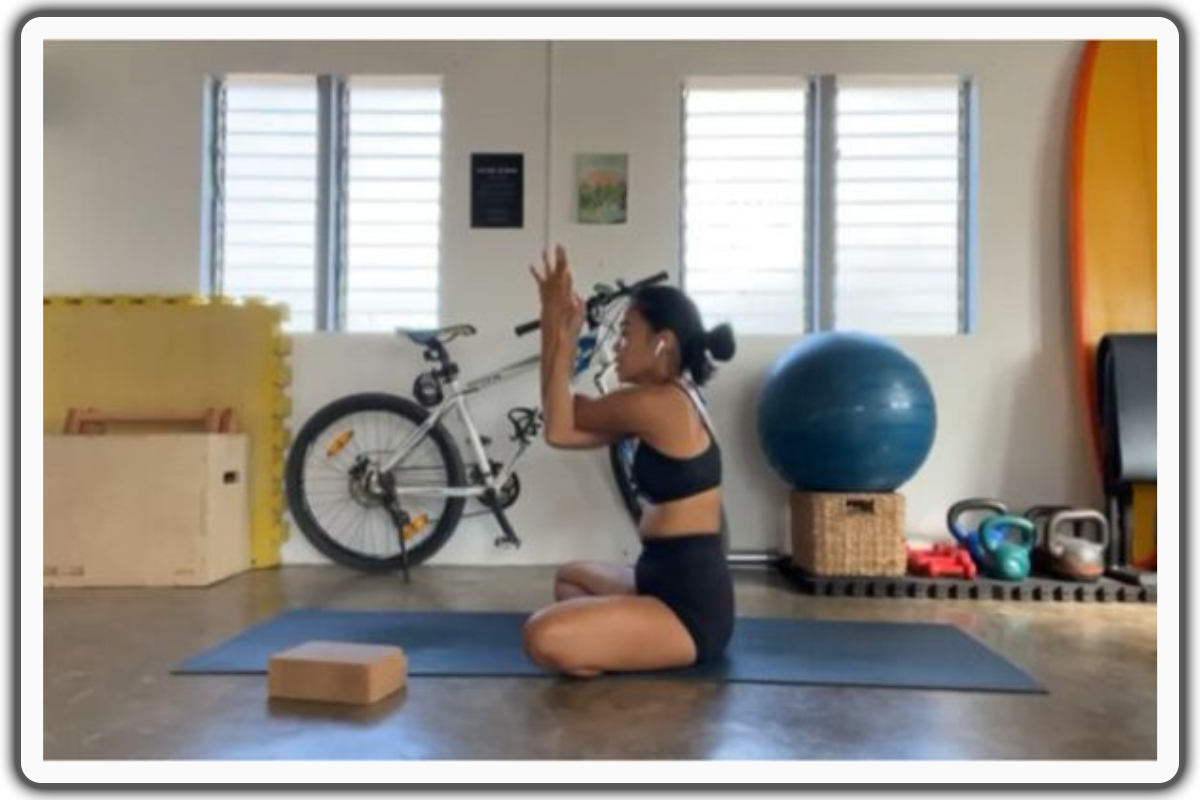
Firstly, begin in an upright sitting position on the floor with your legs crossed in front of your body while maintaining good alignment with your head, shoulder, and hips. Secondly, engage your core then cross your arms in front of your body at shoulder height, wrapping at the elbows and wrist. Hold this position for several deep belly breath through your nose and mouth. Lastly, relax and return to the starting position. Repeat the movements on the opposite side.
Note: To make the exercise easier, cross your arms in front of your body, where the back of your palms meet.
3. Half Circle Neck Stretch
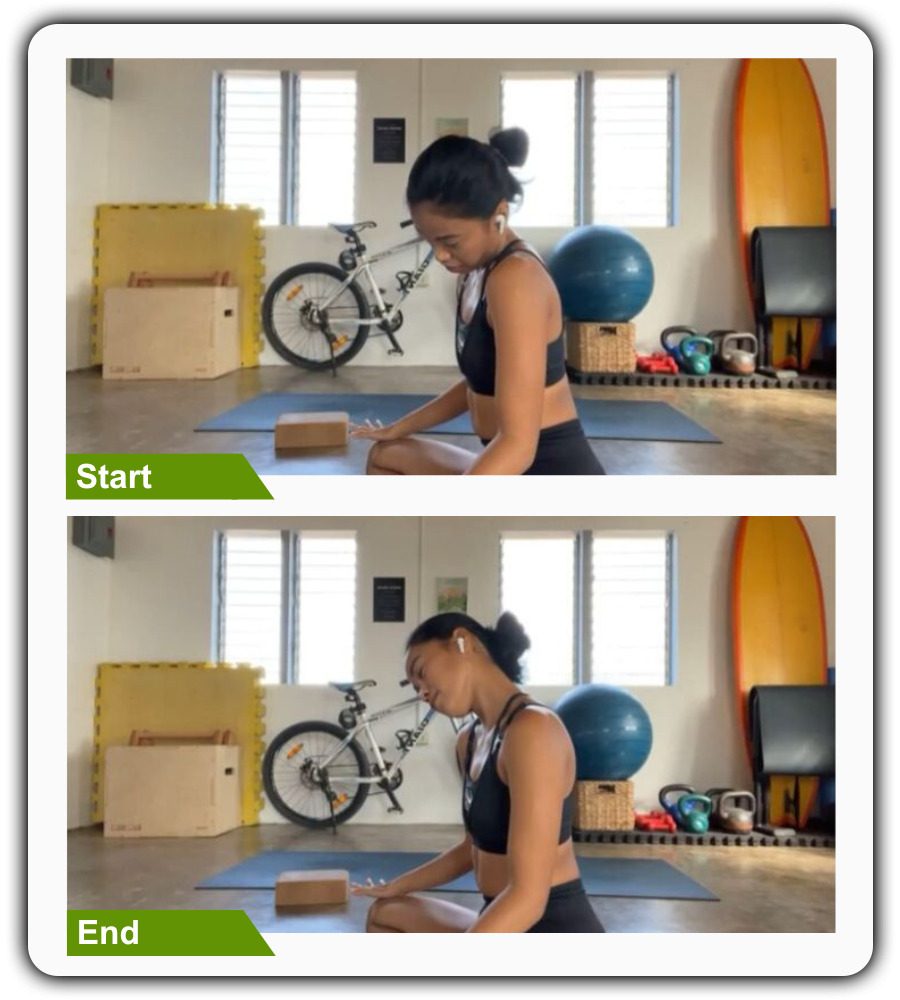
Begin in an upright sitting position on the floor with your legs crossed while maintaining good alignment with your head, shoulders, and hips. Place both hands on your knees and engage your core. Looking for a light stretch along the sides of the neck, lower your gaze, then drop one ear towards your shoulder and gently swing your head from side to side. Repeat the movement as needed, alternating sides.
To make this exercise more challenging, begin by gradually shifting your gaze upward from the final position of Half Circle Neck Stretch, then softly lower your gaze to the floor. Tilt one ear towards your shoulder and sway your head from side to side. Repeated the sequence of movements.
Variation 1- Side Down Neck Stretch
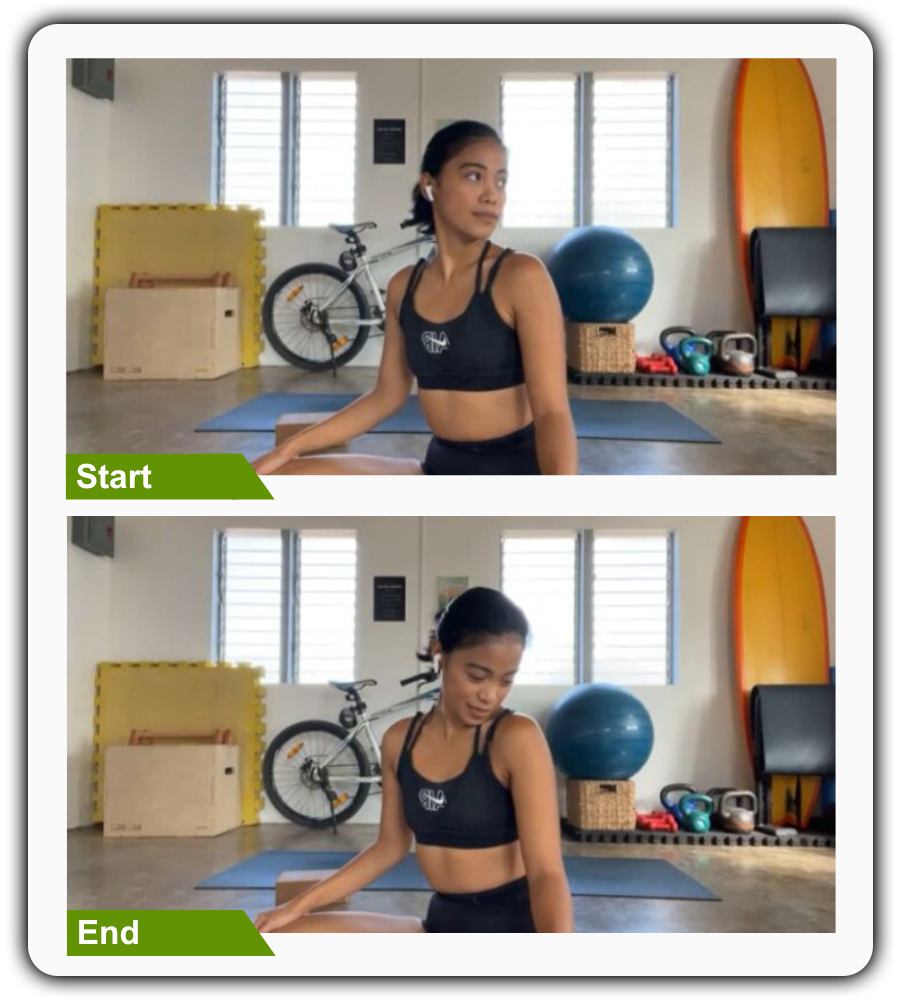
Begin in an upright sitting position on the floor with your legs crossed while maintaining good alignment with your head, shoulders, and hips. Place both hands on your knees and engage your core. Looking for light stretch on the side of the neck, slowly turn your head to one side, tucking your chin in. Hold this position for three deep belly breaths, in through your nose and then out through your mouth. Return to the starting position and repeat the movement to the opposite side.
Variation 2 - Revolve Neck Stretch
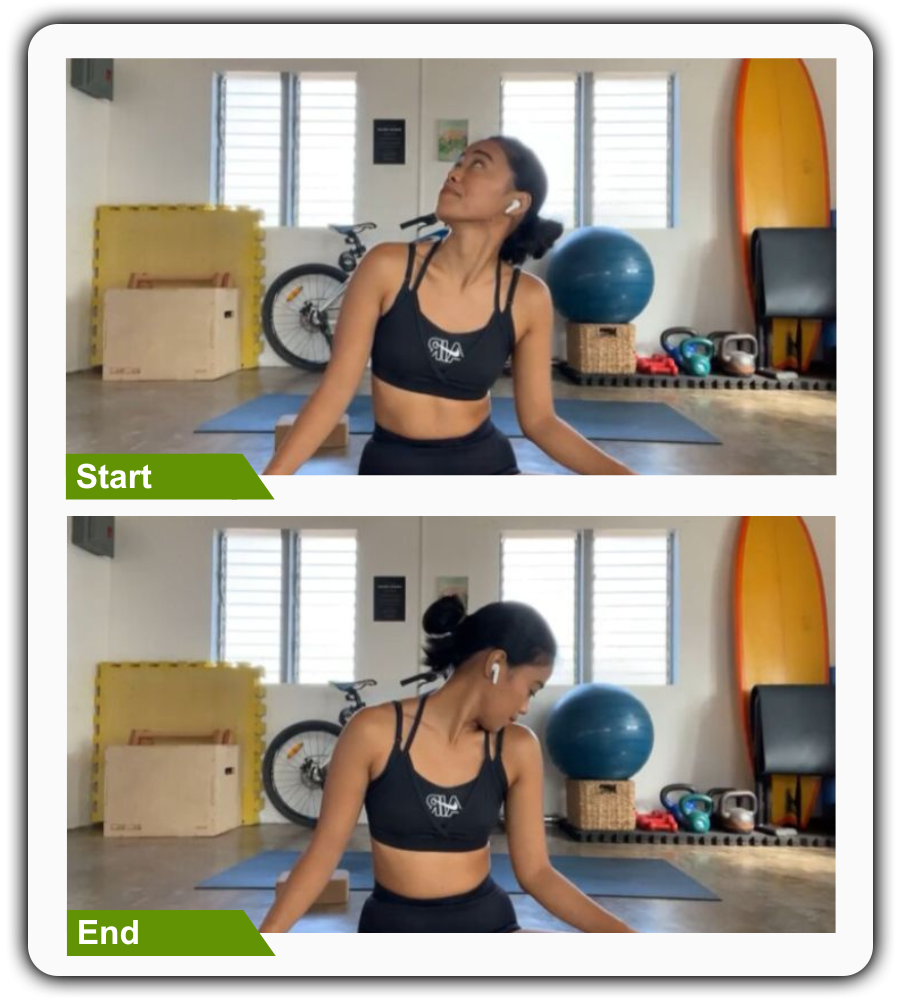
From the end position of the Up-Down Neck Stretch, turn your head to the opposite side as you bring your gaze towards the sky. Hold this position for a few seconds. Relax and then return to the starting position. Repeat the movement on the opposite side. Start with 1 set of 5 repetitions on each side
4. Supported Bridge
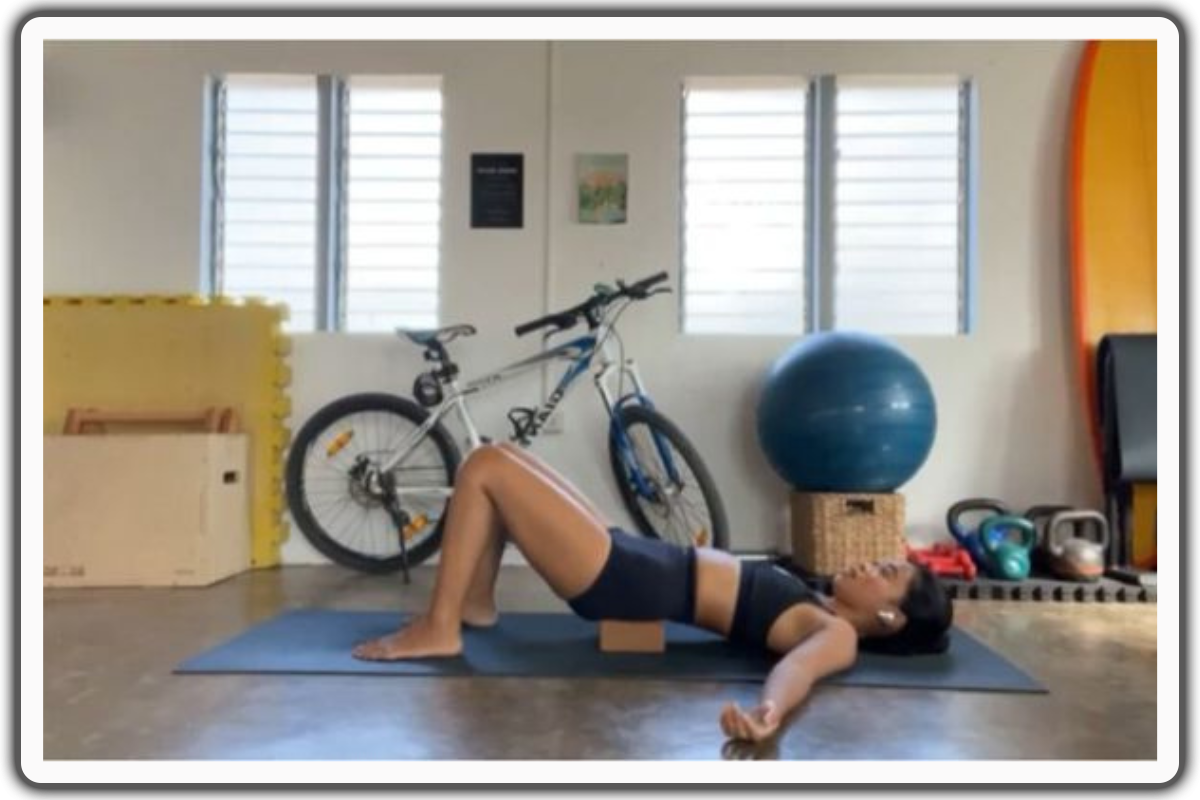
For this yoga pose for migraine, you can use a yoga block, pillow, rolled towel, or any other item that can support your lower back in a bridging position.
Lie on your back with your knees bent and feet flat on the floor, around shoulder-width apart. Position the yoga block under your lower back area and extend your arms at your sides, relaxing your upper body. Close your eyes and take several deep belly breaths, in through your nose and then out through your mouth. Relax and return to the starting position.
Variation 1: Waterfall
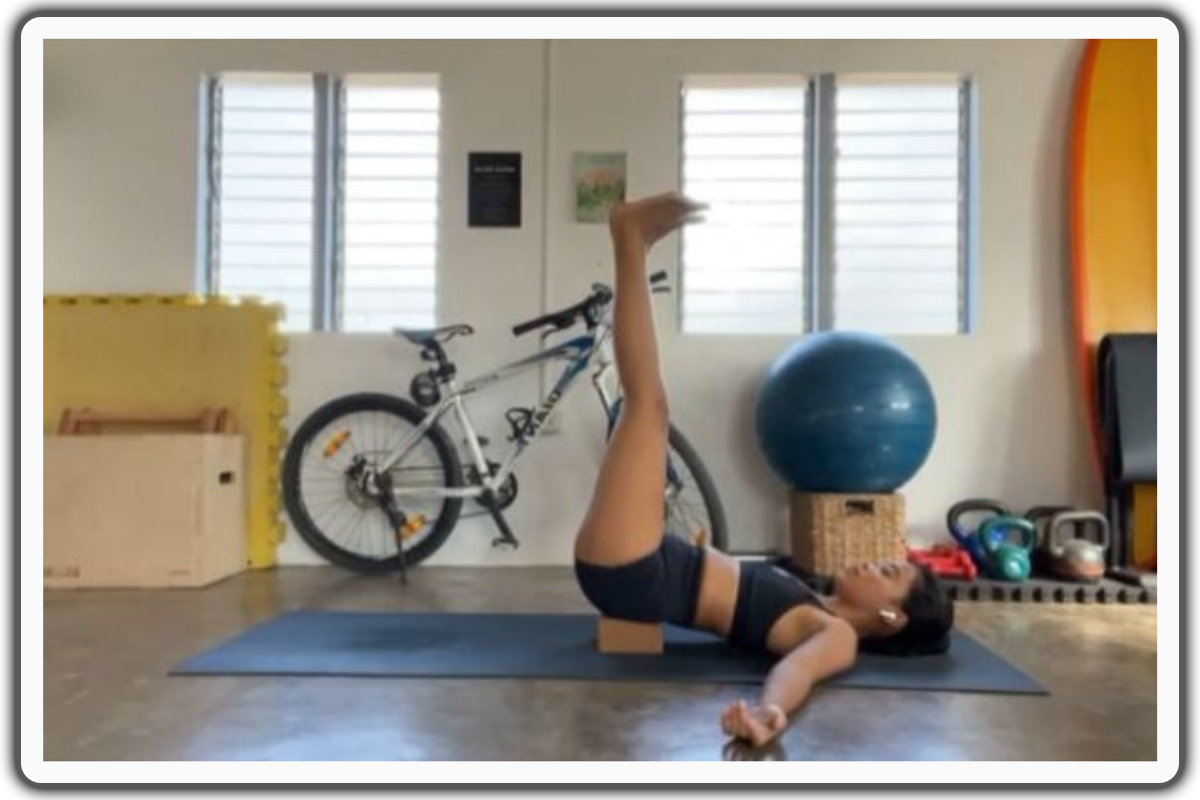
Firstly, lie on your back on the floor with your knees bent and feet flat on the floor. Extend your arms at your sides, relaxing your upper body. Place the yoga block under your lower back area. Secondly, tighten your core and slowly raise both legs straight upward. Lastly, close your eyes and take several deep belly breaths, in through your nose and out through your mouth. Relax and then return to the starting position.
Note: You have the option to do this exercise against a wall if needed.
Variation 2: Supported Corpse Pose
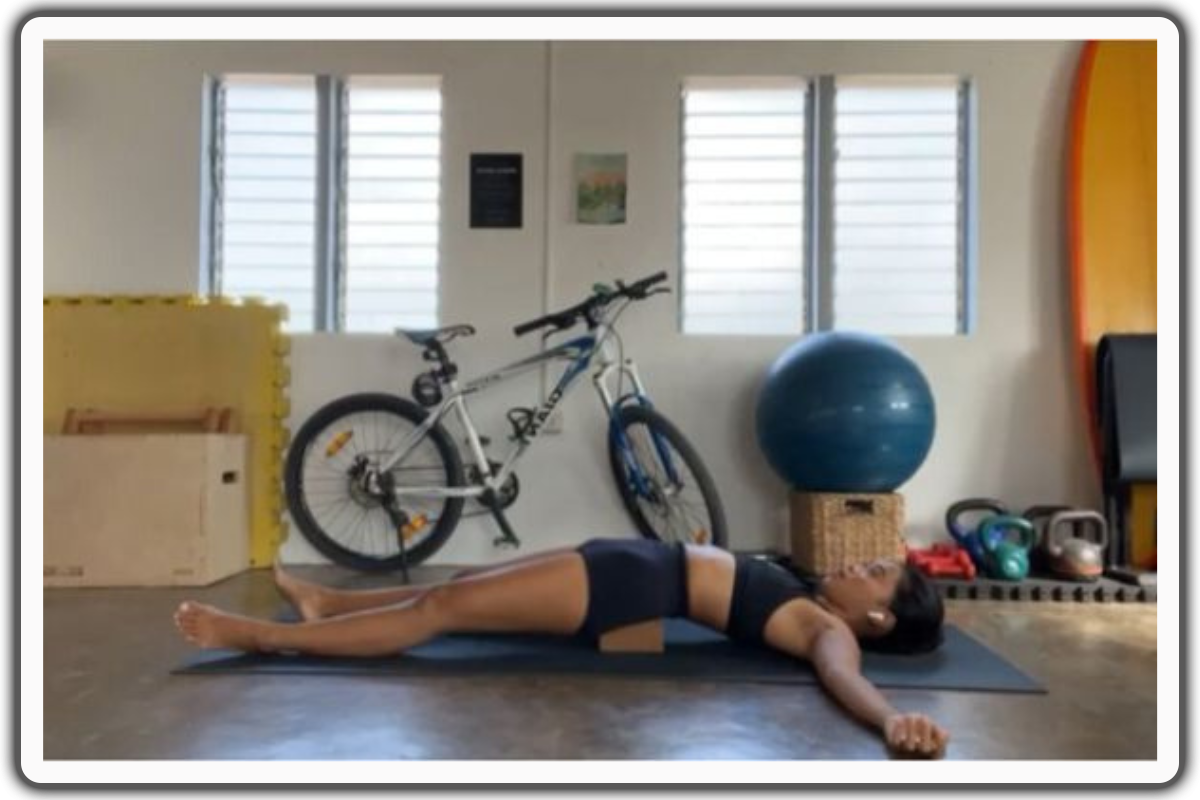
Lie on your back on the floor with your legs wider than shoulder-width apart, maintaining good alignment with your head, shoulders, and hips. Place the yoga block under your lower back area and extend your arms at your sides, relaxing your upper body. Hold the position for several deep belly breaths through your nose and out through your mouth. Relax and remove the yoga block to return to the neutral lying position.
5. Knees to Chest
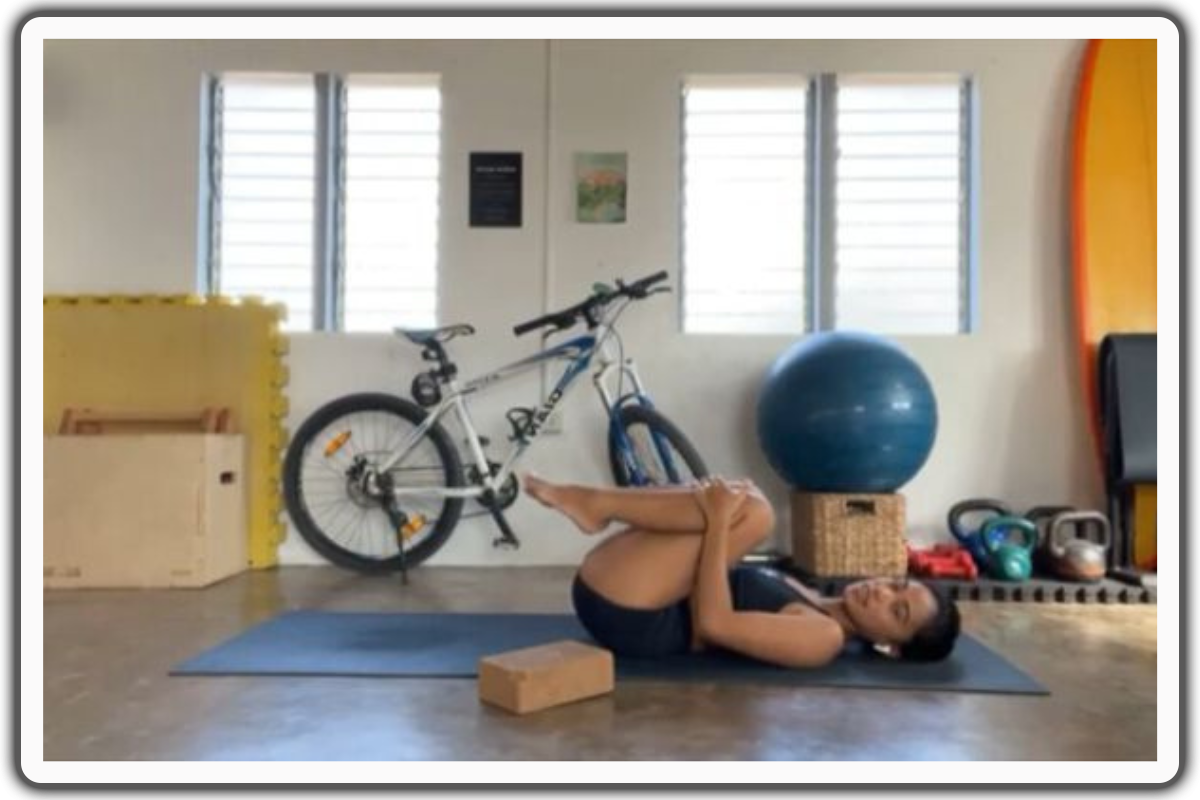
Firstly, lie on your back with your knees bent and your feet flat on the floor. Engage your core. Secondly, bring both knees towards your chest and hold onto your knees with both arms, looking for a light stretch in the glutes and lower back. Lastly, hold this position for several deep belly breaths, in through your nose and out through your mouth. Relax and then return to the starting position.
Note: To intensify this yoga pose for migraine, gently rock your knees from side to side.
6. Seated Spinal Twist
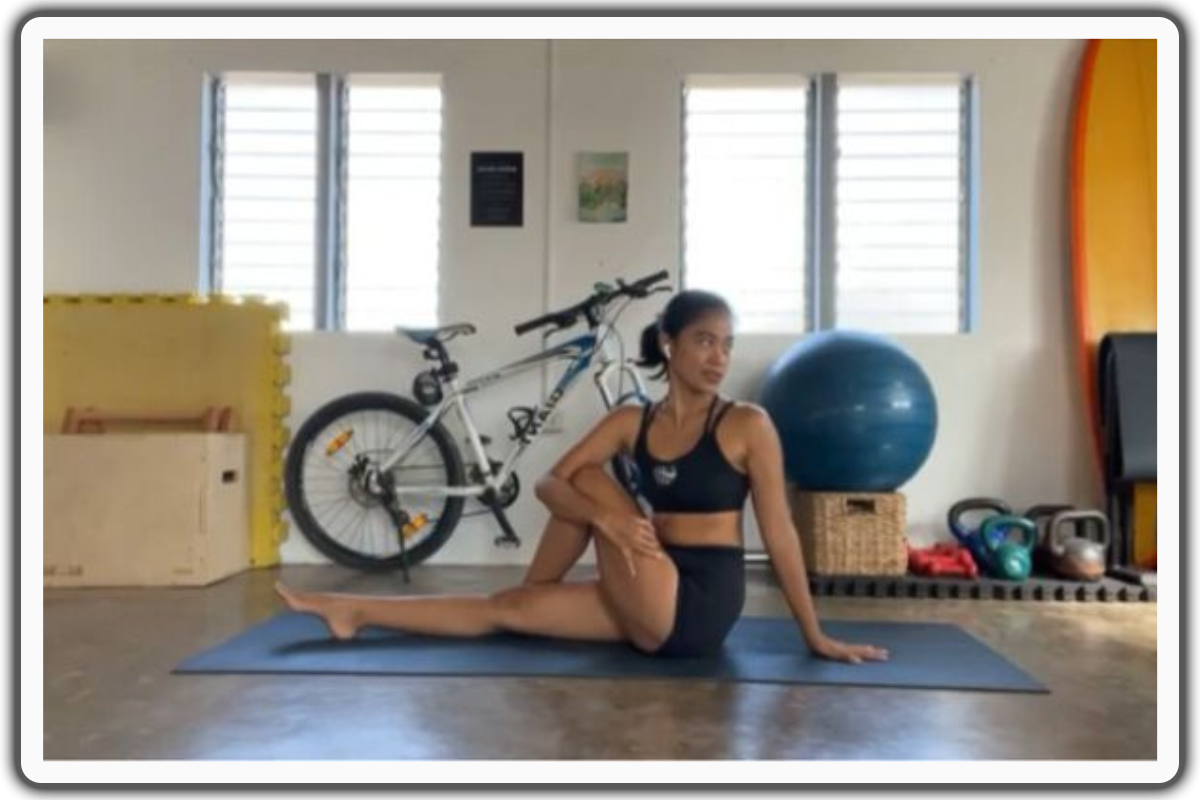
Begin in an upright sitting position on the floor with your legs extended in front of your body, maintaining good alignment with your head, shoulders, and hips. Bend on knee and plant your foot over your opposite leg. Engage your core and twist your upper body to the side. pull your knee closer to your body to intensify the stretch, and hold this position for a couple of deep belly breaths, in through your nose and then out through your mouth. Return to the starting position and then repeat the movement on the opposite side.
Note: You can perform the movement in a supine position with or without support.
Cool Down
1. Seated Corpse Pose
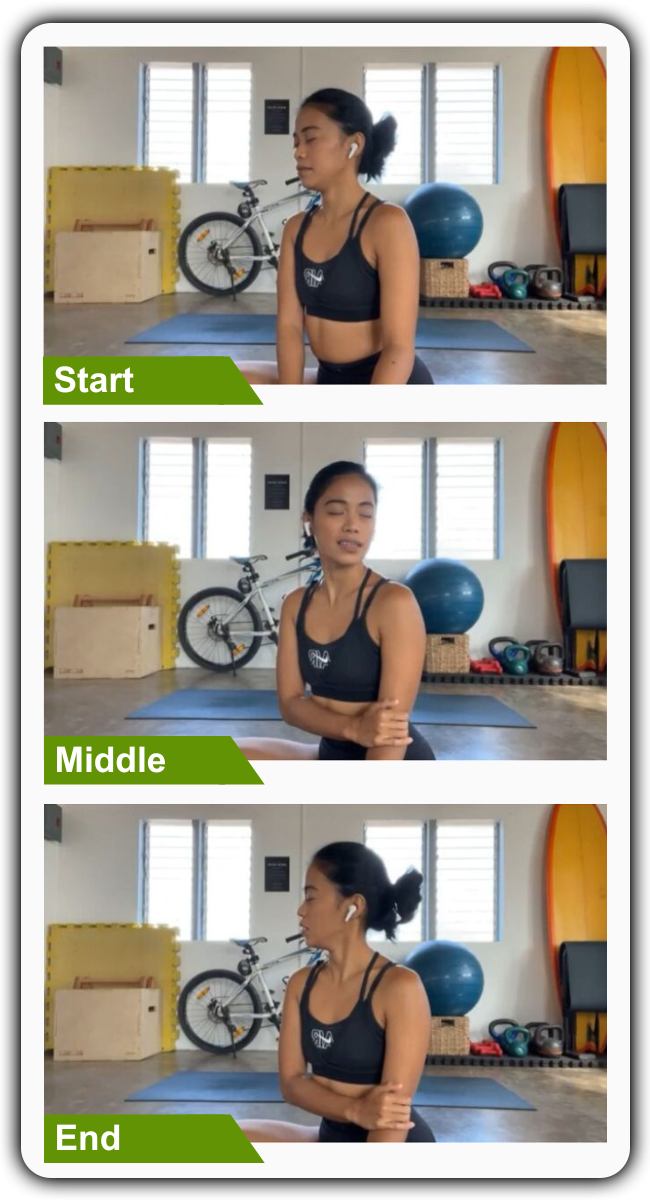
Firstly, begin in an upright sitting position on the floor with your legs crossed, maintaining good alignment with your head shoulders, and hips. Secondly, relax your upper body as you release any feeling of tension. Allow your body to feel heavy and begin to notice how you feel and breathe. Thirdly, come back to the present moment by taking deep belly breaths. Lastly, begin to wiggle your toes and fingers or move you head side to side as slowly and gently as you can.
2. Gratitude Meditation
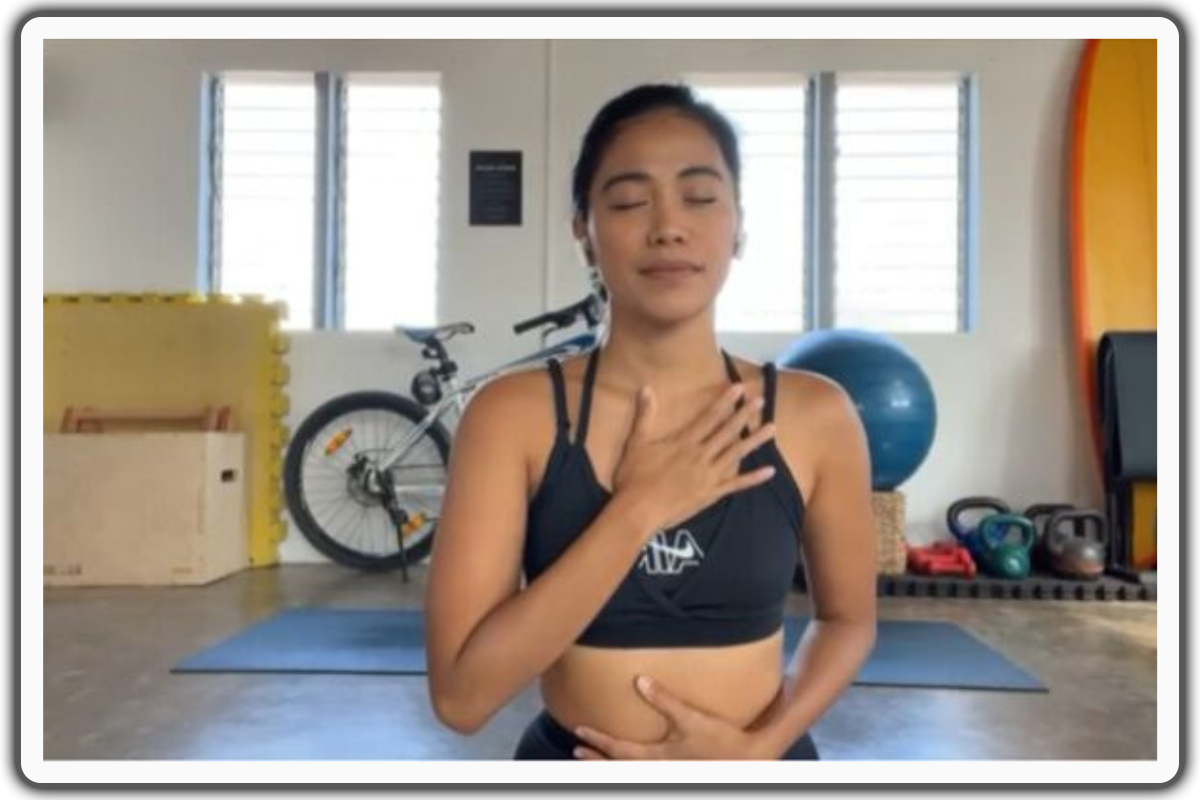
Begin in an upright sitting position on the floor with your legs crossed, maintaining good alignment with your head, shoulders, and hips. Place one hand over your chest and one hand on your belly. Close your eyes and fill yourself with a sense of gratitude as you take a few deep belly breaths, in through your nose and then out through your mouth.
3. Prayer Hands
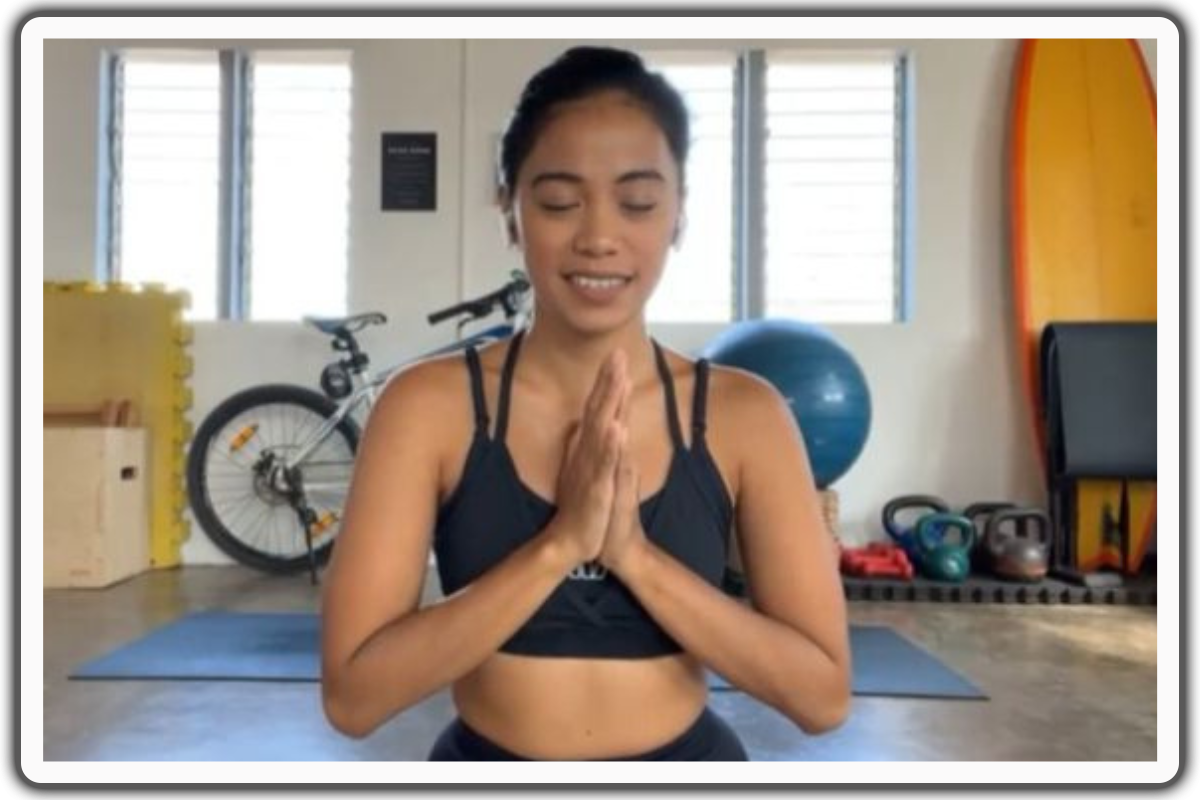
Begin in an upright sitting position with your legs crossed in front of your body, maintaining good alignment with your head, shoulders, and hips. Press your palms together at chest height. Close your eyes and take several deep belly breaths, in through your nose and then out through your mouth.
Incorporating Yoga into Your Daily Routine
Incorporating yoga pose for migraine into your daily routine is crucial for reaping its advantages in alleviating tension headaches, It's also crucial to integrate it into your daily routine. Maintaining a consistent yoga practice is essential for unlocking the benefits its offers. Here are some tips on how to make yoga a regular part of your life:
Start Slow
If you're new to yoga, start with shorter practice sessions and gradually build your endurance. Begin with 10-15 minutes daily and gradually increase the duration as you become more comfortable. It's better to have a consistent shorter practice than sporadic longer sessions.
Create a Sacred Space
Designate a specific area in your home as your yoga space. Clear out the clutter, decorate it with calming elements, and make it a peaceful sanctuary. A dedicated space will make committing to your yoga practice easier.
Set a Schedule
Determine the best time for you to practice yoga daily. Whether it's in the morning to start your day off right or in the evening to unwind and relax, having a set schedule will make it easier to prioritize your practice.
Start with Guided Classes
If you're new to yoga or need guidance, start with online classes or join a local yoga studio. A Yoga teacher guiding you through the poses and sequences can help you learn proper form while employing methods and skills to guarantee a safe and efficient practice.
Listen to your Body
Yoga involves the cultivation of self-awareness and self-care. Always listen to your body and modify poses as needed. If a particular posture or movement causes pain or discomfort, back off and try a more gentle variation or skip it altogether. Your body knows best, so honor its limitations and avoid pushing yourself beyond your comfort zone.
Integrating yoga pose for migraine into your daily routine can lead to the experience of long-term benefits of reduced tension headaches and improved overall well-being. However, practicing yoga safely and effectively is also essential to prevent any potential injuries.
Conclusion
Tension headaches can be debilitating and impact your quality of life. Instead of relying solely on painkillers, consider incorporating yoga pose for migraine into your routine as a natural and holistic approach to finding relief. By addressing the underlying causes of tension headaches, such as stress, muscle tension, and poor posture, yoga can help alleviate pain and also restore peace to your life.
Through gentle stretches, deep breathing exercises, and relaxation techniques, yoga pose for migraine offers a powerful tool for managing tension headaches. By consistently practicing yoga and incorporating it into your daily routine, you can experience the physical and mental benefits of reduced stress, improved muscle relaxation, better posture, and also enhanced mental clarity.
Prepare to unroll your yoga mat, inhale deeply, and embark on a journey towards tension headache relief. With dedication and commitment, you can find lasting relief and restore peace to your life through the power of yoga pose for migraine. Say goodbye to the grip of pain and hello to a life filled with tranquility and well-being.
